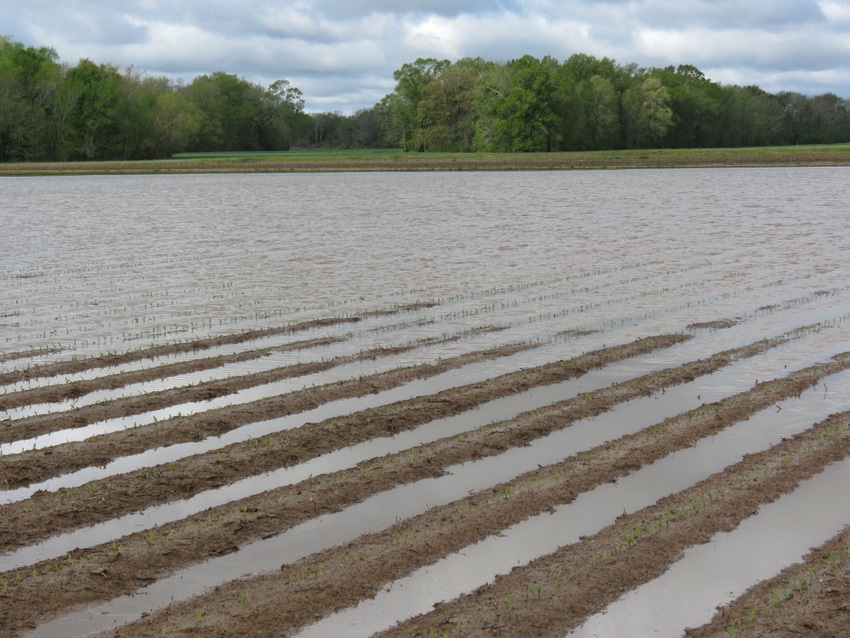
Following huge rains – up to 8 inches in some locations – Louisiana corn farmers are keen to see if recently-planted fields will escape unscathed.
“For a lot of the corn-growing region in northeast Louisiana, it’s pins and needles time,” says Dan Fromme, LSU AgCenter corn specialist. “The central and northeast portions of the state really got hammered.”
Fromme says the rains began in earnest on April 4 and continued for several days. “It’s rained so much it’s a real concern for our corn. Most of the corn is still in the ground or is, at most, at the two- or three-leaf stage.”
Much soil was already saturated because of the wet winter. “Add 6 to 8 inches of rain to that and it’s led to a lot of flooding.
“Corn is very sensitive prior to the V-6 stage. Continuous flooding for 48 to 72 hours may mean stand loss. Time will tell. After the water comes off, it’ll be three to five days before we know for sure. We need to see if there’s any new growth in those first few days.”
One saving grace is that the temperatures have remained cool, says Fromme. “The worst-case scenario would be to have all this water on the fields at the same time temperatures are rising. But we’re still in the 60s and 70s so the temperatures aren’t as potentially destructive to the corn plants.”
Was all the corn planted in Louisiana? Farther north in the Mid-South a lot of corn still hasn’t been planted.
“Prior to this last rain, it appeared 75 to 80 percent of the expected corn acreage was planted,” says Fromme. “Now, though, farmers are telling me that they’re going to go with another crop because it’s too late to stick with corn. So, I’d guess that all our corn acres are in.”
In 2013, Louisiana had 680,000 acres of corn. This year, Fromme expects acreage to be down around 500,000 acres.
Asked about concerns in the corn that survives the flooding, Fromme says “stand survival is the focus right now.
“But when you get this much rain, you’re always worried about nitrogen loss. First, it can happen through denitrification. Second, in some cases, you may lose some nitrogen with leaching below the root zone.
“Farmers will likely have to make management decisions. ‘Do I apply more nitrogen?’”
And even if the corn plant survives, “it may not be healthy. It could mean poor root systems, lower yields. We’re really going to watch how this develops.”
About the Author(s)
You May Also Like




